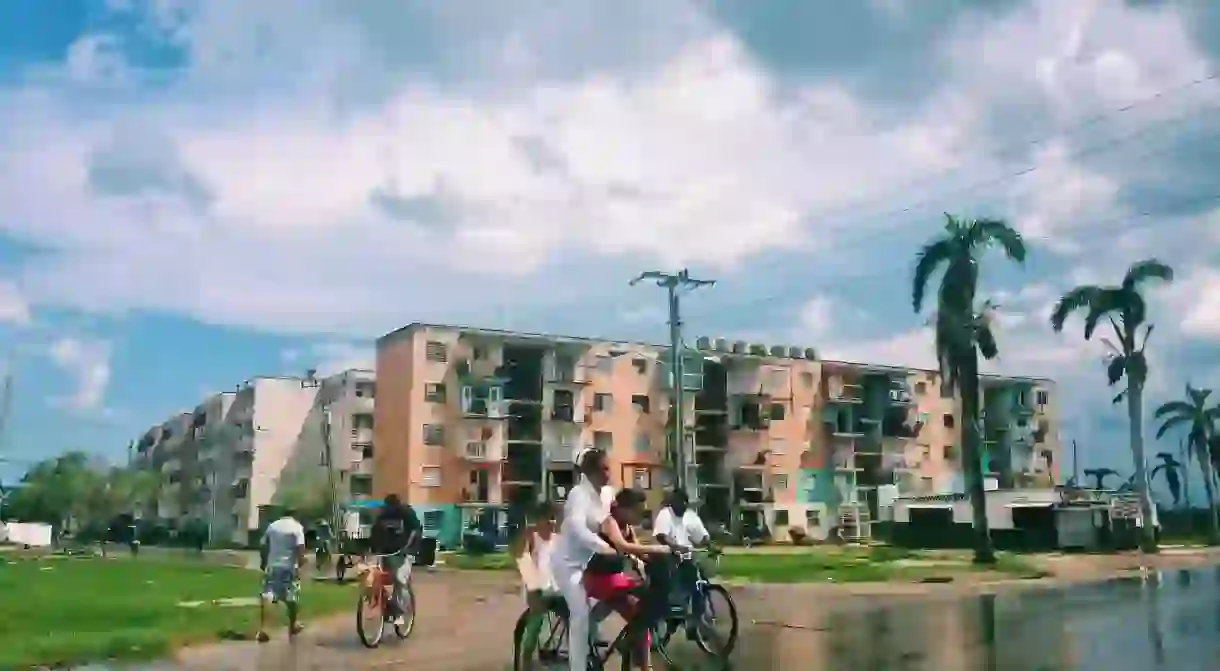Cuba’s Social Fabric of Resilience, Resistance, and Recovery

Last month Hurricane Irma, a devastating natural disaster, triggered a temporary economic collapse that has not only affected the Cuban tourism industry (which most of the population relies on), but daily life and access to basic necessities. This piled more strife on a country already under huge economic strain from the U.S. trade embargo.

Coastal towns took the real hit; crops were destroyed, debris and trash piled up on the streets, and the already tenuous and fragile infrastructure of the island country was severely damaged. The loss in tourism affected the livelihood of most of the working population in Cuba, including taxi cab drivers, restaurant owners, homestay owners, and others. The hurricane also left many without food. With livestock depleted, a severe food shortage emerged—even eggs were rationed to five a month per person.
About a week after the hurricane hit, Rocio Yepez, owner of Fisheye Journeys, decided to take action. “It’s not uncommon for Cuban people to wait years for government aid after a natural disaster,” she says. After numerous trips to the island nation over the past few years, she felt a responsibility towards the Cuban people and started a relief campaign, accepting donations and funds to purchase basic supplies to distribute around various towns.

“Some homes in Central and Old Havana near El Malecón (the seawall) had been flooded and many people lost everything.” Rocio walked the streets with a small group distributing relief items—toothbrushes, soap, towels, bed sheets, first aid medication—and was greeted with tight hugs and tears. Even though it had been weeks since the hurricane, they still hadn’t received any aid.
“One woman pointed to a line on her wall near the ceiling that marked where the water had come in,” Rocio says. “People whose homes had flooded had not been rescued, except for those with collapsed homes that were taken to shelters.”

While driving from Remedios to Caibarién, she witnessed roofs completely blown away, people hauling roofing materials on their bikes, electricians restoring power lines, and piles of trash outside of homes and on the streets. But the cities are quicker to take action after a natural disaster: “Debris from the streets in Havana is back to normal and El Malecón reopened after being closed for nearly three weeks. Power is [now] back on in Havana and in most affected areas,” she says.
Resilience is built into the social fabric of the population, as seen in their internet hardware/Wi-Fi workarounds, their perseverance through a cruel and unnecessary embargo, and their long, tumultuous history with colonizers and dictatorships.

Daily life in Cuba isn’t easy, even without the added devastation of a natural disaster. With the national salary averaging roughly $30 USD per month, access to basic supplies and toiletries is limited. Even if they are affordable, the government still heavily controls their availability. Will soap be in stock at the local store this month? Feminine hygiene products? Bottled water? Maybe not. But the Cuban people always manage to make it through. Their uncanny resilience and resistance is both admirable and astonishing. They will overcome, just as they always do.
For more stories on Cuba’s infrastructure and preservation efforts, check out this exclusive interview with architect Nguyen Rodriguez Barrera from inside Havana’s Fábrica de Arte Cubano.













